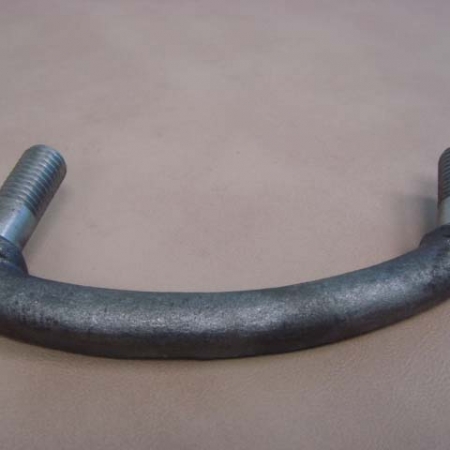

Relays are electromagnetic switches that are used to switch electrical loads on and off. It does not matter in which direction you insert the fuse. You must replace it with one of the same amperage and therefore the same color. If the metal strip is broken in the middle, the fuse has blown. To check the fuse, pull it out of Thunderbird’s fuse box using a fuse puller or needle nose plier and hold it against the light. If the fuse is blown, replace it with a new one with the specified amp rating.
1956 ford thunderbird bird steering wheel manual#
In case of a faulty fuse, the circuit is interrupted and the horn can not work.Ĭheck your Thunderbird’s owners manual or the fuse box cover to find the exact location of the fuse for the horn. Just be careful! One false move could mean a chip, dent, or sore thumb.The horn on Ford Thunderbird needs electricity to work. You should only need to use moderate force.
1956 ford thunderbird bird steering wheel free#
By tapping on the block of wood with your hammer you should be able to free the seized sleeve. You should choose a groove that is easily accessible. First, place the block of wood so its edge lies in one of the sleeve grooves. Before using either of these tools, make sure you wrap the steering column sleeve with a good rag.Īs a last resort you can use a 1" x 2" block of wood and a hammer. Make sure it is at least fourteen inches or larger. As an alternative, a trusty pipe wrench will work. This tool is available at most hardware stores and should cost approximately $20.00 to $25.00. The perfect tool to use to loosen your steering column sleeve is a large chain wrench. If lubricant alone is not enough to loosen the sleeve, you will be forced to use physical force. If you're lucky, this may be all you need to do. You may want to wrap the area with rags to catch any drops. Be sure to clean up any overspray or drips immediately. This will allow time for the lubricant to penetrate the threads. You should wait approximately twenty-four hours before attempting to loosen the sleeve. Spray the lubricant between the sleeve and the steering column. You can, however, do the following.įirst, apply some WD-40 or other spray lubricant to the steering column sleeve. The analogy is appropriate, except you can't apply a blow torch or hacksaw to your steering column sleeve. Just ask any bruised knuckle on your hand how easy it is to loosen a seized nut from a rusted, dirty threaded bolt. The result is a seized steering column sleeve. Exposure to water in the form of dew, humidity, or the inevitable summer downpour, creates rust on the metal threads. Over the years, the threads on the steering column usually become clogged with dirt and road grime. The problem lies in the chrome sleeve that you are supposed to be able to loosen with a simple clockwise twist. The above procedure sounds simple, and it is. Your steering wheel should stay in its new desired position. Once you have adjusted your steering wheel, simply retighten the chrome sleeve. I was able to place it back in the column, but once the steering wheel is out of the column you run the risk of damaging the wires which run up into the steering column.

I pulled the steering wheel out of the column with one strong pull. My car, however, must have lost the stop during a prior restoration. There should be a stop which prevents you from pulling the steering wheel completely out of the column. Be careful not to pull the steering wheel out of the steering column. Once the sleeve is loose, you can adjust your steering wheel, up or down, by pulling or pushing on the steering wheel. By turning the sleeve in a clockwise direction, you will loosen the sleeve. The chrome sleeve has numerous grooves which run parallel with the steering column. Your steering wheel can be moved by loosening the chrome sleeve located directly behind the steering wheel. With proper adjustment, you can adjust your steering wheel to accommodate your individual physical needs, within set engineering tolerances. Yes, that steering wheel which has progressively inched up closer to the driver's seat each year and made you feel as if you might have gained a few extra pounds over the winter actually can be moved up or down on the column. It might come as a surprise to some Classic Thunderbird owners that their 1955-57 Thunderbirds came equipped with a "telescoping" steering column.


 0 kommentar(er)
0 kommentar(er)
